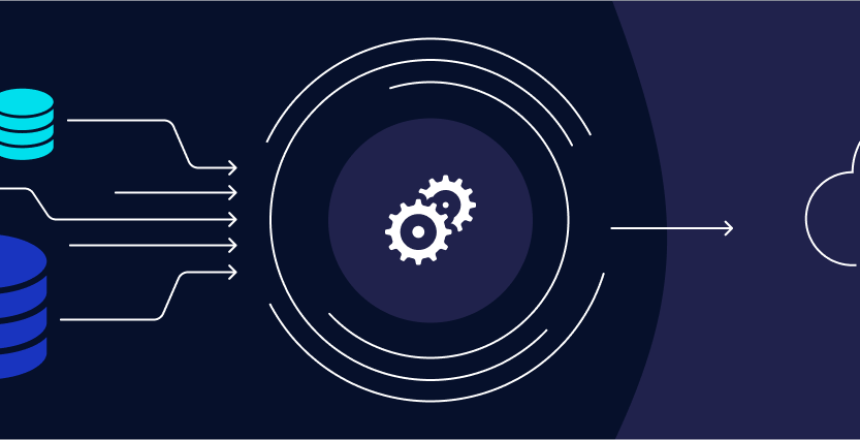
In the ever-evolving world of data, Extract, Transform, Load (ETL) pipelines play a pivotal role in collecting, processing, and delivering valuable insights. These pipelines act as the backbone of data-driven decision-making for businesses and organizations. In this comprehensive blog, we’ll dive deep into ETL pipelines, exploring their significance, components, and a range of tools that empower you to create efficient and robust ETL processes.
Understanding ETL Pipelines: The Data Journey
At its core, an ETL pipeline is a series of processes that extract data from multiple sources, transform it into a usable format, and load it into a target destination such as a data warehouse or a database. The ETL process can be divided into three distinct stages:
1. Extraction (E): Data is extracted from various sources, which can include databases, files, APIs, and streaming platforms. The goal is to gather raw data for analysis.
2. Transformation (T): Extracted data often requires cleaning, validation, and transformation to ensure consistency and quality. Transformations can involve data enrichment, aggregation, or even complex operations.
3. Loading (L): Transformed data is loaded into a data store or data warehouse where it becomes accessible for reporting, analytics, and business intelligence.
The Significance of ETL Pipelines
ETL pipelines are the backbone of data-driven decision-making for several reasons:
- Data Integration: ETL pipelines enable the integration of data from disparate sources, providing a unified view of information.
- Data Quality: Through data cleaning and validation, ETL processes improve data quality and accuracy.
- Automation: ETL pipelines automate the data preparation process, reducing manual effort and the potential for human errors.
- Historical Data: ETL pipelines can handle historical data, allowing organizations to analyze trends and patterns over time.
- Scalability: As data volumes grow, ETL pipelines can scale horizontally to accommodate the increased load.
Components of an ETL Pipeline
A typical ETL pipeline consists of the following components:
- Source Systems: The systems or sources from which data is extracted, such as databases, logs, or APIs.
- ETL Server: The server or environment where the ETL processes are executed.
- ETL Tools: Software tools that facilitate data extraction, transformation, and loading. These can be open-source or commercial solutions.
- Data Storage: The destination where transformed data is stored, such as data warehouses, databases, or cloud storage.
- Monitoring and Logging: Systems for tracking the progress and performance of ETL jobs and capturing any errors or issues.
ETL Tools: Empowering Data Transformation
Choosing the right ETL tools is crucial for building efficient pipelines. Here are some popular ETL tools, each with its unique strengths:
- Apache Nifi: An open-source data integration tool that provides an intuitive interface for designing ETL workflows.
- Talend: A comprehensive ETL and data integration platform with a strong focus on data quality and governance.
- Apache Spark: A powerful data processing framework that can be used for ETL tasks, especially when dealing with large-scale data.
- Microsoft SSIS: Part of the Microsoft SQL Server suite, it’s a robust ETL tool for organizations invested in the Microsoft ecosystem.
- Apache Airflow: A workflow automation tool that can be used for orchestrating complex ETL pipelines.
- AWS Glue: A fully managed ETL service provided by Amazon Web Services, ideal for cloud-based data processing.
- Google Dataflow: Part of the Google Cloud ecosystem, it offers stream and batch data processing capabilities for ETL.
Best Practices for ETL Pipeline Development
Building efficient and maintainable ETL pipelines requires following best practices:
- Data Profiling: Understand your data sources thoroughly through data profiling to identify potential issues.
- Incremental Loading: When possible, use incremental loading to update only the changed or new data, reducing processing time.
- Error Handling: Implement robust error handling and logging to monitor pipeline health.
- Testing: Thoroughly test ETL processes, including data validation and quality checks.
- Documentation: Maintain clear documentation of your ETL workflows, making it easier for teams to understand and collaborate.
- Scalability: Design pipelines with scalability in mind, anticipating future data growth.
Conclusion: Empowering Data-Driven Insights
ETL pipelines are the backbone of modern data-driven organizations, enabling the extraction, transformation, and loading of data for analysis and decision-making. By understanding the components, significance, and best practices associated with ETL pipelines, businesses can harness the full potential of their data assets. Whether you choose open-source solutions or commercial ETL tools, the key is to design and maintain ETL processes that are efficient, reliable, and scalable, driving actionable insights and value from your data resources. For a glimpse into the fusion of technology and artistry, similar to what we can expect in the new series, explore HackFuel Digital Marketing Services in Pune. This platform showcases how technology enhances visual experiences, paralleling the innovation anticipated.

